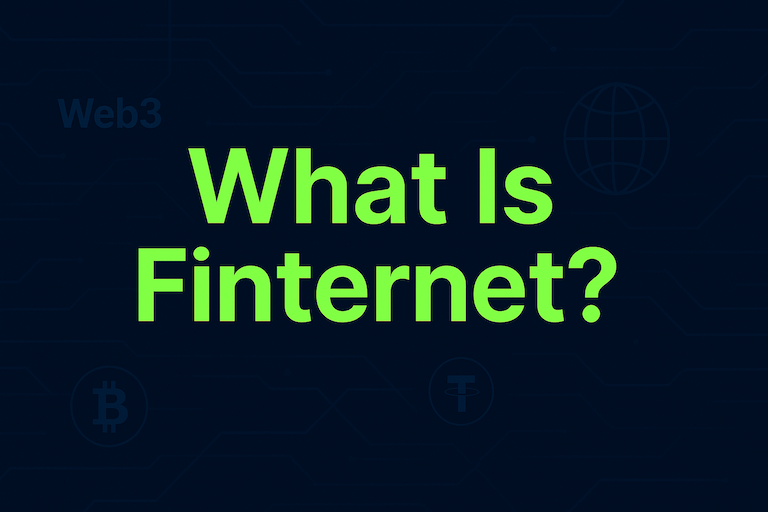Understanding Web3 Business Models and Tokenomics
Feb 7, 2025
The evolution of the internet from Web1 to Web2 and now Web3 represents a significant shift in how businesses operate and interact with users. Web3 introduces decentralized platforms that empower users and creators, fundamentally changing traditional business models. This blog post explores the various business models that thrive in the Web3 ecosystem, alongside the concept of tokenomics, which plays a crucial role in incentivizing participation and facilitating governance. By understanding these components, stakeholders can better navigate the rapidly evolving landscape of decentralized technologies. Ultimately, the fusion of innovative business strategies and effective tokenomics is key to realizing the full potential of Web3.
The Shift to Decentralization
The movement towards Web3 is characterized by a fundamental change in the way online platforms function. Unlike traditional systems where control is centralized, Web3 leverages blockchain technology to decentralize power and ownership. This new paradigm enables users to have greater control over their data and digital assets. As a result, businesses are rethinking their models to align with the principles of decentralization. This shift has given rise to unique opportunities and challenges that require a clear understanding of the underlying mechanics.
Users are empowered to own their data.
Decentralization fosters trust and transparency.
New business models are emerging that prioritize community engagement.
Traditional intermediaries are being replaced by smart contracts.
Innovation in governance structures is becoming increasingly important.
Key Business Models in Web3
Web3 showcases a variety of innovative business models that are reshaping industries. These models often leverage community involvement and decentralized technologies to create value. They focus on user engagement and incentivization, ensuring that participants are rewarded for their contributions. Understanding these business models is essential for entrepreneurs looking to succeed in the Web3 space. Here are some prevalent business models that have emerged:
Decentralized Finance (DeFi) platforms that offer financial services without intermediaries.
Non-Fungible Tokens (NFTs) which enable unique digital asset ownership.
Decentralized Autonomous Organizations (DAOs) that allow community governance.
Tokenized ecosystems that create community-driven marketplaces.
Play-to-Earn models that reward users for their participation in games.
The Role of Tokenomics
Tokenomics refers to the economic system surrounding a cryptocurrency or token, which is vital for the sustainability of any Web3 project. The design of tokenomics can influence user behavior and engagement within a platform. It encompasses aspects such as token distribution, incentives, and governance mechanisms, all of which are crucial for the success of a project. A well-structured tokenomics model aligns the interests of stakeholders and encourages active participation. Here are some critical elements to consider within tokenomics:
Token supply and distribution methods that can affect scarcity and value.
Use cases for tokens that drive demand and utility.
Incentive structures that reward early adopters and loyal users.
Governance mechanisms that enable community decision-making.
Economic models that predict and manage token value fluctuations.
Community Engagement and Incentives
Community engagement is at the heart of successful Web3 projects. Unlike traditional business models that focus on top-down approaches, Web3 emphasizes collaborative involvement from users. This shift fosters a sense of ownership and loyalty among participants. Incentives play a crucial role in encouraging users to contribute actively to the ecosystem. By creating systems that reward engagement, projects can thrive and grow organically. Consider these strategies for enhancing community engagement:
Establishing reward programs for active participants.
Hosting events and hackathons to foster collaboration.
Creating educational resources that empower users.
Utilizing social media platforms for community building.
Encouraging user-generated content to enhance the ecosystem.
Challenges and Considerations
While the potential of Web3 is immense, it is not without its challenges. Navigating the complexities of decentralized systems requires careful consideration and strategic planning. Issues such as regulatory compliance, security vulnerabilities, and market volatility can pose significant risks to businesses and users alike. Understanding these challenges is essential for any stakeholder looking to thrive in the Web3 landscape. Here are some considerations to keep in mind:
Legal regulations that may impact the operation of decentralized platforms.
Security measures to protect users from malicious attacks and fraud.
Market dynamics that can affect token value and user trust.
The need for transparency in governance and decision-making processes.
Technological barriers that may hinder user adoption and engagement.
The Future of Web3
Looking ahead, the potential for Web3 to transform industries and empower users is vast. As more individuals and businesses adopt decentralized technologies, the landscape will continue to evolve. Innovations in technology and governance will drive further development, creating new opportunities for engagement and value creation. The integration of artificial intelligence, machine learning, and other advanced technologies with Web3 principles will likely lead to even more sophisticated business models. The future holds promise, and those who understand and adapt to these changes will be well-positioned to succeed.
Continued growth of decentralized applications (dApps).
Increased adoption of blockchain technology across various sectors.
Evolution of user experiences in digital environments.
Development of robust regulatory frameworks to support innovation.
Emergence of hybrid models combining traditional and decentralized approaches.
Start your safe cryptocurrency journey now
Fast and secure deposits and withdrawals, OSL safeguards every transaction !


